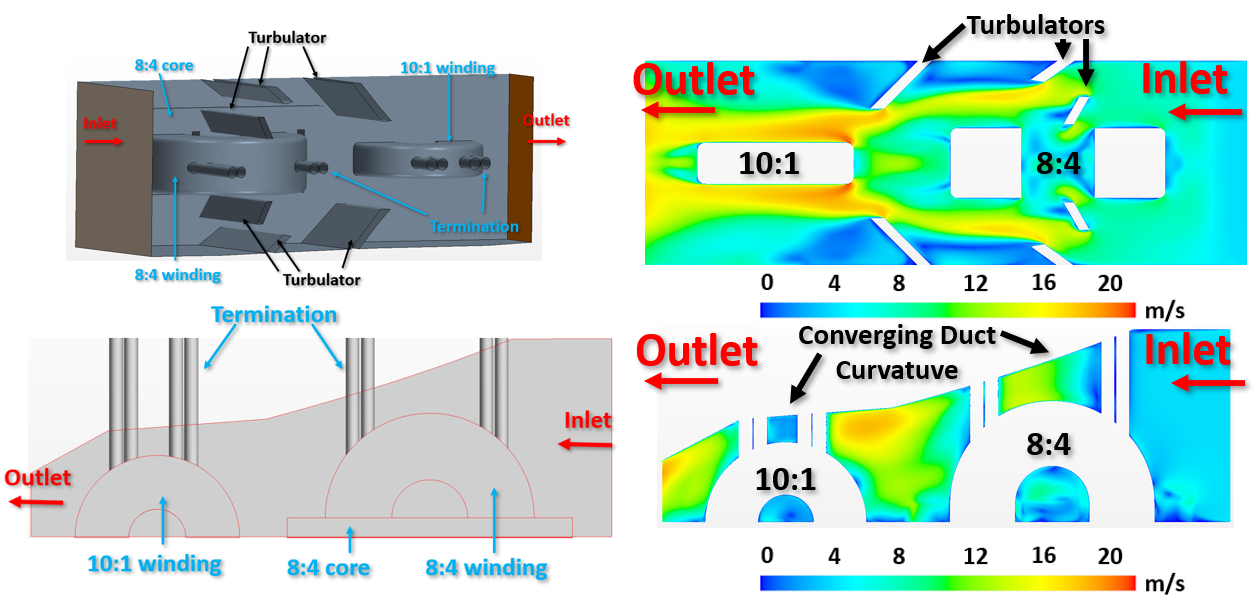LIBRARY
Magnetic Design and Validation of a 500 kHz, 18 kW Intra-Leaved Litz Wire Transformer for Battery Charging Applications

The secondary side is split into parallel secondaries S1 and S2 to handle full-load current (56 ARMS) while still using small diameter litz wire to achieve a high window fill factor. Due to the high operating frequency of 500 kHz, any mismatch in winding leakage inductance will result in unequal current sharing among parallel windings. An "Intra-leaved" winding structure is proposed as shown in Fig. 1. With "Intra-leaving", the winding impedance of S1 and S2 are well matched resulting in improved current sharing over the non-"Intra-leaved" case. Current sharing results are shown in Fig. 2, which validates the impact of the proposed winding strategy. Without "Intra-leaving" S1 takes 53 APeak and S2 takes 27 APeak. With "Intra-leaving" S1 takes 42 APeak and S2 takes 38 APeak, an almost perfect current split between the parallel windings S1 and S2. The proposed winding method, potting method, and analytical insights are applicable to future high-power, high-density planar transformers.





















































































